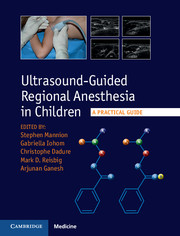Book contents
- Frontmatter
- Contents
- List of contributors
- 1 Introduction
- Section 1 Principles and practice
- Section 2 Upper limb
- Section 3 Lower limb
- Section 4 Truncal blocks
- 14 Ultrasound-guided ilioinguinal/iliohypogastric block
- 15 Ultrasound-guided transversus abdominis plane block
- 16 Ultrasound-guided rectus sheath block
- 17 Ultrasound-guided paravertebral block
- Section 5 Neuraxial blocks
- Section 6 Facial blocks
- Appendix: Muscle innervation, origin, insertion, and action
- Index
- References
15 - Ultrasound-guided transversus abdominis plane block
from Section 4 - Truncal blocks
Published online by Cambridge University Press: 05 September 2015
- Frontmatter
- Contents
- List of contributors
- 1 Introduction
- Section 1 Principles and practice
- Section 2 Upper limb
- Section 3 Lower limb
- Section 4 Truncal blocks
- 14 Ultrasound-guided ilioinguinal/iliohypogastric block
- 15 Ultrasound-guided transversus abdominis plane block
- 16 Ultrasound-guided rectus sheath block
- 17 Ultrasound-guided paravertebral block
- Section 5 Neuraxial blocks
- Section 6 Facial blocks
- Appendix: Muscle innervation, origin, insertion, and action
- Index
- References
Summary
Clinical use
The transversus abdominis plane (TAP) block is a somatic block of the abdominal wall. It has an established role in providing both intraoperative and post-operative analgesia for a wide range of abdominal surgery (McDonnell et al., 2007). The efficacy and safety of the TAP block in pediatric patients is less well described. For this reason, its use in the pediatric population remains limited, with central neuraxial blockade favored for post-operative analgesia in abdominal surgery (Mai et al, 2012). However, with increased recognition of the potential benefits of TAP blocks for pediatric patients, together with advancements in ultrasound technology, it has gained increasing popularity since the initial description in pediatric anesthesia in 2008 following inguinal hernia repair in 8 children (Fredrickson et al., 2008).
Originally described as the abdominal field block (Rafi, 2001), the landmark technique has undergone several modifications in an attempt to improve its analgesic efficacy. The term “transversus abdominis plane block” was coined in 2006 (McDonnell et al., 2007), a year before an ultrasound-guided technique was reported (Hebbard et al., 2007). Since then, further variations have been reported, with posterior, subcostal, and combined approaches all described. Considerable debate remains over which technique provides the best abdominal wall block for specific surgeries, with no particular approach being consistently superior in the available literature.
In contrast to the adult literature, few randomized studies have examined the efficacy and safety of the TAP block in pediatric patients. The lack of resources available to guide pediatric anesthetists likely explains the limited use of TAP blocks in this cohort of patients to date. Most information available to practicing clinicians stems from published case reports and case series. However, a recently published safety analysis (Long et al., 2014) should lend confidence to clinicians and investigators performing this procedure, paving the way for more rigorous, larger randomized controlled trials.
Successful use of TAP blocks has been described for children spanning all age groups, including premature infants and neonates, with perioperative analgesic benefit for a wide array of surgical procedures including laparoscopy (diagnostic, appendicectomy, pyloromyotomy), laparotomy, umbilical surgery, formation and reversal of enterostomy/colostomy, open appendicectomy, inguinal hernia repair, hydrocelectomy, orchidopexy, scrotal exploration, and other abdominal wall surgery (closure exomphalos, closure gastroschisis, portosystemic shunt placement).
- Type
- Chapter
- Information
- Ultrasound-Guided Regional Anesthesia in ChildrenA Practical Guide, pp. 106 - 111Publisher: Cambridge University PressPrint publication year: 2015



